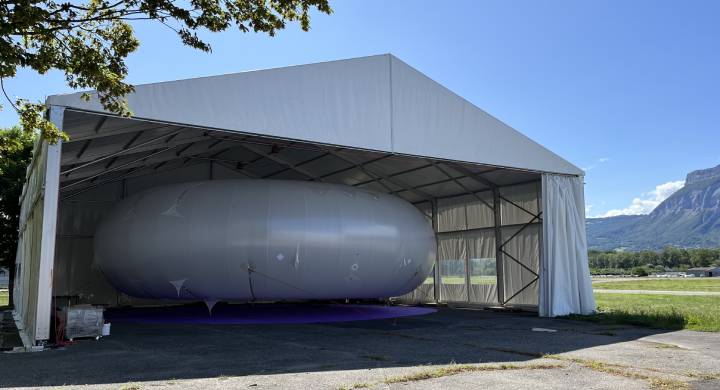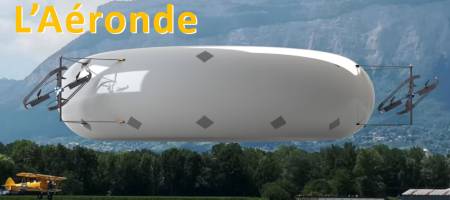
Silent and energy-efficient, the Aéronde is a new type of blimp which earned its eponymous manufacturer a special award at the i-Lab contest in July 2023. But designer Jérôme Delamare is no stranger to these innovation awards: as well as teaching at Grenoble INP – Ense3 and UGA, and working as a researcher at G2ELab, Jérôme previously founded Enerbee Technology, a start-up specialising in recovering kinetic energy from connected devices and a winner of the special jury prize at this very same ceremony back in 2014. In designing this striking, torus-shaped blimp, his goal was to tackle the pressing need for the aeronautical sector to reduce its energy consumption and environmental impact. The aircraft also has great potential for use in maintenance work on power lines, tree pruning etc.
Resembling a giant doughnut some 15 metres in diameter (the diameter of the hole in the middle is 6 metres), the Aéronde is fitted with three rotating propulsion engines, each containing four turbines along with a battery-powered electric motor. “That gives the blimp 5 hours of flight time, with the ability to reach speeds of 25-30 km/h in any direction, while carrying a maximum load of 200 kilograms,” Jérôme Delamare explains. “All in total silence, and with very low energy consumption.”
With total energy consumption of 1kWh, the cost of flying the Aéronde for an hour comes in at less than a Euro, while in the same amount of time a Squirrel-type helicopter guzzles 180 litres of kerosene… The unusual shape of the blimp was chosen because it negates the impact of wind direction, whereas a more traditionally-shaped balloon would tend to drift in the direction of the prevailing breeze. Better still, the rotating engines should enable the Aéronde to withstand gusts of up to 70km/h as well as landing and taking off… vertically! All properties which should make it an invaluable tool for low-altitude airborne tasks such as maintenance work on hard-to-reach power lines, tree pruning, crop-sowing etc. As well as having the edge over helicopters in these situations, the Aéronde could also be used for recreational flights and events.

* CNRS, Grenoble INP - UGA, UGA



